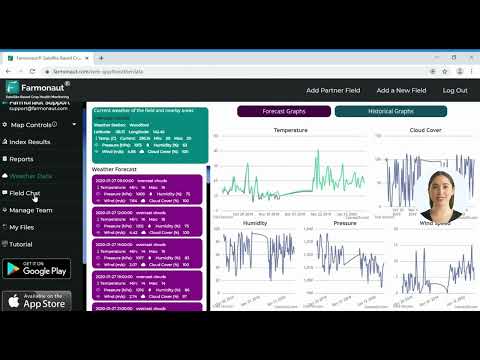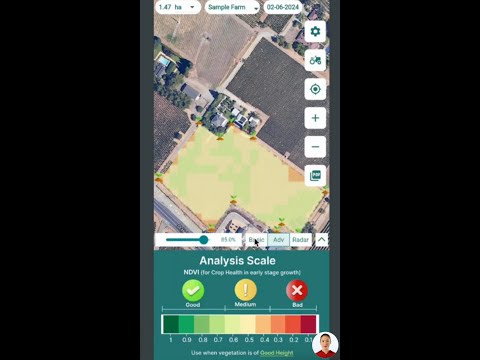Wisconsin’s Winter Woes: How Lack of Snow Cover Impacts Crop Health and Spring Soil Moisture
“Wisconsin’s insufficient snowfall this winter puts over 1.1 million acres of alfalfa at risk of winter kill.”
As we delve into the heart of Wisconsin’s agricultural landscape, we find ourselves facing a challenging winter season that has left farmers and agronomists concerned about the future of their crops. The lack of snow cover in southern Wisconsin has become a pressing issue, with potential far-reaching consequences for crop health and soil moisture levels. In this comprehensive exploration, we’ll examine the intricate relationship between winter snow cover, crop protection, and the overall sustainability of agriculture in the Badger State.
The Importance of Snow Cover for Agriculture
Snow cover plays a crucial role in protecting crops during the harsh winter months. It acts as a natural insulator, shielding plants from extreme temperature fluctuations and desiccating winds. For crops like alfalfa, winter wheat, and other small grains, this protective blanket can mean the difference between survival and winter kill.
Dan Smith, an expert from UW Extension’s integrated pest and crop management program, explains, “There are a couple of factors that we should consider when we’re thinking about winter kill, for alfalfa, we’re primarily considering those conditions where we don’t have snow cover, like December and January this year.”

The lack of snow insulation exposes crops to several risks:
- Dehydration and stress in dry conditions
- Increased vulnerability to temperature extremes
- Potential damage to crop quality and yield
- Reduced soil moisture for spring planting
Current Snow Conditions in Southern Wisconsin
According to WMTV’s First Alert Meteorologists, southern Wisconsin is currently experiencing a significant deficit in seasonal snow accumulation. Chief Meteorologist Charlie Shortino reports, “We typically get about 40 inches or a little more than that per year in snow, and we’re a foot behind on the season right now.”
While recent snowfall in mid-February provided some relief, concerns remain about its longevity and effectiveness in protecting crops. Smith notes, “We finally have snow insulation, but if we don’t have as much snow, say the wind blows it around or it melts this weekend and it gets really cold again, then I’m going to be really worried about the lack of snow cover and the lack of insulation.”
Impact on Specific Crops
Alfalfa Winter Survival
Alfalfa, a key forage crop in Wisconsin, is particularly susceptible to winter damage without adequate snow cover. The plant’s crown, which is crucial for regrowth in spring, can suffer irreparable harm if exposed to severe cold or repeated freeze-thaw cycles.
Winter Wheat Management
Winter wheat, planted in fall and harvested the following summer, relies on snow cover for protection during its dormant phase. Insufficient insulation can lead to winterkill, reducing stand density and potentially compromising yield potential.
Small Grains
Other small grains, such as rye and barley, also benefit from snow cover. These crops may experience increased winter mortality rates in areas with minimal snow accumulation.
Soil Moisture and Spring Planting
The impact of reduced snowfall extends beyond immediate crop protection. Snow melt is a crucial source of soil moisture, essential for spring planting and early crop growth. Smith expresses concern about this aspect, stating, “I’m worried about that in the spring for all crops because we need the soil moisture to be replenished by our snow melt. We really need to have some more snow for that to be an ideal scenario, which we have plenty of winter left too.”
“A 1-inch decrease in snow depth can lower soil temperature by up to 3°F, potentially damaging winter crops.”
Inadequate soil moisture can lead to:
- Delayed planting
- Poor seed germination
- Stunted early-season growth
- Increased vulnerability to spring drought conditions
Monitoring and Evaluation Strategies
As spring approaches, farmers and agronomists must be vigilant in assessing crop health and soil conditions. Smith advises, “In early spring, farmers should plan to scout their crops and look for signs of growth and life. We dig up our plants, put them in a warm location for a few days, and see if they naturally turn green.”
This process, known as spring crop evaluation, is crucial for determining the extent of winter damage and making informed decisions about field management.
Technological Solutions for Crop Monitoring
In today’s digital age, farmers have access to advanced tools for monitoring crop health and soil conditions. Satellite-based farm management solutions, such as those offered by Farmonaut, provide real-time insights into vegetation health, soil moisture levels, and other critical metrics. These technologies can be particularly valuable in assessing the impact of winter conditions on crop stands and planning for spring management.
Adapting to Changing Winter Patterns
As climate patterns continue to evolve, Wisconsin farmers may need to adapt their winter crop protection strategies. Some potential approaches include:
- Selecting cold-hardy crop varieties
- Implementing alternative insulation methods (e.g., cover crops, mulching)
- Adjusting planting dates to optimize winter hardiness
- Utilizing precision agriculture techniques for targeted field management
The Role of Precision Agriculture in Winter Crop Management
Precision agriculture tools, such as those provided by Farmonaut, can play a significant role in helping farmers navigate the challenges of winter crop protection. By leveraging satellite imagery and AI-driven analytics, farmers can:
- Monitor crop health in real-time
- Identify areas at risk of winter damage
- Optimize resource allocation for spring recovery
- Make data-driven decisions about field management
Wisconsin Crop Winter Protection Comparison
| Crop Type | Optimal Snow Cover Depth (inches) | Risk of Winter Kill without Snow Cover | Spring Soil Moisture Importance (1-5 scale) | Recommended Monitoring Frequency |
|---|---|---|---|---|
| Alfalfa | 4-6 | High | 5 | Weekly |
| Winter Wheat | 3-5 | Medium | 4 | Weekly |
| Rye | 2-4 | Low | 3 | Monthly |
| Barley | 3-5 | Medium | 4 | Weekly |
Community and Economic Impact
The challenges posed by insufficient snow cover extend beyond individual farms. The potential for reduced crop yields and quality can have ripple effects throughout Wisconsin’s agricultural economy, impacting:
- Farm income and profitability
- Local food processing industries
- Agricultural supply chains
- Rural community economic stability
As we navigate these winter woes, it’s crucial for farmers, researchers, and policymakers to work together in developing resilient agricultural practices that can withstand changing winter conditions.
Looking Ahead: Spring Management Strategies
As Wisconsin farmers prepare for the transition to spring, several key strategies can help mitigate the impact of a snow-poor winter:
- Early Crop Assessment: Conduct thorough field evaluations as soon as conditions allow to identify areas of winter damage.
- Soil Testing: Analyze soil moisture and nutrient levels to inform spring fertilization and irrigation plans.
- Adaptive Planting: Consider adjusting planting dates or crop varieties based on soil conditions and long-term weather forecasts.
- Conservation Practices: Implement soil conservation techniques to maximize moisture retention and reduce erosion risk.
- Technological Integration: Utilize precision agriculture tools for targeted field management and resource optimization.
The Role of Research and Extension Services
In addressing the challenges posed by changing winter conditions, the importance of ongoing research and robust extension services cannot be overstated. Organizations like UW Extension play a crucial role in:
- Conducting field trials to assess crop resilience
- Developing and disseminating best practices for winter crop protection
- Providing timely advice and support to farmers
- Facilitating knowledge exchange between researchers and practitioners
By leveraging these resources, Wisconsin’s agricultural community can enhance its adaptive capacity and maintain its position as a leader in sustainable farming practices.
Embracing Technology for Agricultural Resilience
As we confront the challenges posed by unpredictable winter conditions, the integration of advanced technologies becomes increasingly crucial. Farmonaut’s suite of tools offers farmers powerful capabilities for monitoring and managing their crops throughout the year. By leveraging satellite imagery, AI-driven analytics, and real-time data, farmers can:
- Track vegetation health indices (e.g., NDVI) to assess crop vigor
- Monitor soil moisture levels to optimize irrigation and planting decisions
- Receive personalized crop management recommendations through AI advisory systems
- Utilize blockchain-based traceability for enhanced supply chain transparency
These technological solutions empower farmers to make data-driven decisions, potentially mitigating the impact of adverse winter conditions and optimizing resource use throughout the growing season.
Collaborative Approaches to Agricultural Sustainability
Addressing the complex challenges posed by changing winter patterns requires a collaborative approach involving various stakeholders in the agricultural sector. Key areas for cooperation include:
- Farmer-to-farmer knowledge sharing networks
- Public-private partnerships for agricultural research and innovation
- Cross-sector collaborations to enhance agricultural resilience
- Community-based initiatives for sustainable farming practices
By fostering these collaborative efforts, Wisconsin’s agricultural community can develop more robust strategies for adapting to changing environmental conditions while maintaining productivity and sustainability.

Conclusion: Navigating Wisconsin’s Agricultural Future
As we’ve explored throughout this article, the lack of snow cover in Wisconsin presents significant challenges for crop health and soil moisture. However, with proactive management strategies, technological integration, and collaborative efforts, farmers can enhance their resilience to these changing conditions.
By embracing precision agriculture tools, such as those offered by Farmonaut, and leveraging the expertise of agricultural extension services, Wisconsin’s farming community can navigate these winter woes and emerge stronger. As we look to the future, the ability to adapt and innovate will be key to maintaining the state’s rich agricultural heritage and ensuring sustainable food production for generations to come.
Earn With Farmonaut: Affiliate Program
Earn 20% recurring commission with Farmonaut’s affiliate program by sharing your promo code and helping farmers save 10%. Onboard 10 Elite farmers monthly to earn a minimum of $148,000 annually—start now and grow your income!
Farmonaut Subscriptions
FAQ Section
Q: How does snow cover protect crops during winter?
A: Snow cover acts as a natural insulator, protecting crops from extreme temperature fluctuations and desiccating winds. It helps maintain a more stable soil temperature, reducing the risk of winter kill for crops like alfalfa and winter wheat.
Q: What are the risks of insufficient snow cover for Wisconsin crops?
A: Insufficient snow cover can lead to increased risk of winter kill, dehydration and stress in dry conditions, potential damage to crop quality and yield, and reduced soil moisture for spring planting.
Q: How can farmers assess crop damage after a winter with little snow?
A: Farmers can conduct early spring crop evaluations by digging up plants, placing them in a warm location for a few days, and observing if they naturally turn green. This process helps determine the extent of winter damage and informs field management decisions.
Q: What role does technology play in managing crops during challenging winter conditions?
A: Advanced technologies like satellite-based farm management solutions (e.g., Farmonaut) provide real-time insights into crop health, soil moisture levels, and other critical metrics. These tools help farmers make data-driven decisions about field management and resource allocation.
Q: How can Wisconsin farmers adapt to changing winter patterns?
A: Adaptation strategies include selecting cold-hardy crop varieties, implementing alternative insulation methods like cover crops or mulching, adjusting planting dates, and utilizing precision agriculture techniques for targeted field management.
For more information on agricultural technologies and solutions, visit Farmonaut’s API or check out their API Developer Docs.







